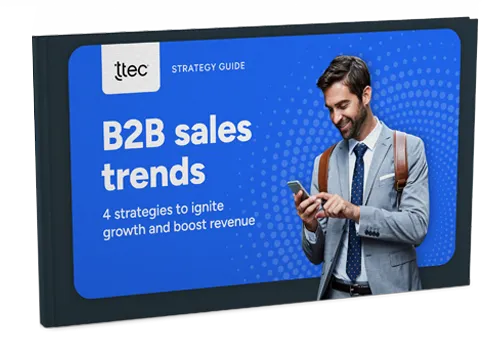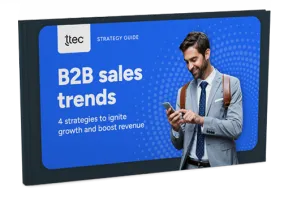One bad experience is all it takes. From airlines to banking to retail, one poor interaction with products or services can send loyal customers to a competitor. Why is it so easy to ditch a business? The reason is mainly due to the lack of emotional connection between customers and businesses.
That’s the bleak picture Forrester’s recent CX Report, “The Missing Human Connection,” paints for its readers. Now more than ever, brands are failing to make enough of an emotional connection with customers to create a sense of brand loyalty. And this can be a huge financial risk.
In order to act, leaders need to recognize the danger of missing out on the emotional aspect of the customer experience and create a better connection. Here are our three biggest takeaways from the Forrester report:
1. Already dealt a bad hand
The characteristics of today’s marketplace already set many organizations up to fail when they try to build an emotional connection with customers. One of the biggest dynamics destroying trust in businesses, according to the research firm, is internal, siloed operations that create a fractured customer journey.
Additionally, cookie-cutter digital experiences for many traditional brands are creating non-distinctive experiences amongst their customers. In other words, customers are getting the same digital experience everywhere. This can make it easier to lose customers since many emerging startups and e-commerce platforms are doing a better job at satisfying customers who want to experiment with the brands they interact with.
According to the report, these dynamics are only growing in strength and furthering the emotional divide, resulting in serious financial losses and moments of growth.
2. Most major industries are facing an emotional drought
The Forrester report traced a lack of emotional engagement across nine different industries including airline, insurance, wealth management, retail, auto, and more. This lack of emotional attachment can make it very easy for customers to leave a brand and flock to competitors. As the report sums it up, “We are living in a market where customers are increasingly free agents and where adoption and abandonment occur at a fast pace and with little regret.”
The report’s findings conclude that traditional loyalty programs, based around free agent dynamics, are underperforming as they focus on “the next transaction” over building meaningful moments. Customers may be satisfied with the deals and promotions they receive, but they do not see their loyalty as being truly rewarded or meaningful. In a sobering note, less than 50 percent of customers have a positive view of how they can be rewarded for their loyalty. Loyalty and perceived value—two powerful components of any customer strategy, are failing.
3. Time to rethink the human connection
The need to recognize and foster emotional outreach with customers is particularly necessary in the banking and retail industries where sustained growth is reliant on customer loyalty. The report offered proactive advice for the two industries:
Banking
The financial tech (fintech) of today needs to focus on creating “experience-first” moments that focus on the customer. Fintech needs to be geared toward more emotional connections with their customers rather than a purely transactional basis. That means curating the technology to fit into the day-to-day decisions that affect their customers, in addition to building points of growth and tools for the various life stages they enter. Ultimately, it’s about creating customer intimacy.
Retail
As ecommerce giants like Amazon are reshaping the market to move far away from the traditional retailer, legacy brands have to evolve. The report calls for retailers to put customers back as the central component of strategies and operations. In order to stand out, brands need to reshape their loyalty programs, as well as in-store and digital experiences, to be more in sync with their customers’ behavior and value expectations.
No time to lose
Organizations are encouraged to look past the recovering economy and recognize the financial risk that losing customer trust poses. In a marketplace where it has become less of a hassle for customers to switch their brand allegiance, companies need to rebuild the trust gap by creating emotional moments with their customers now.


















